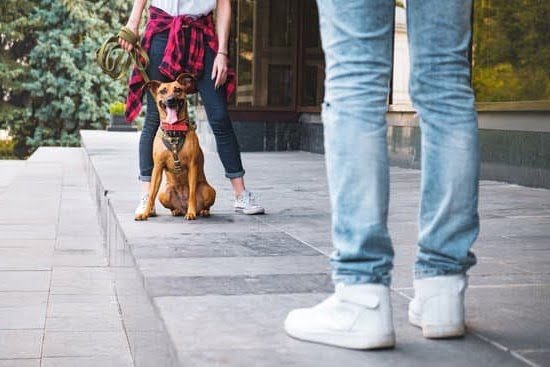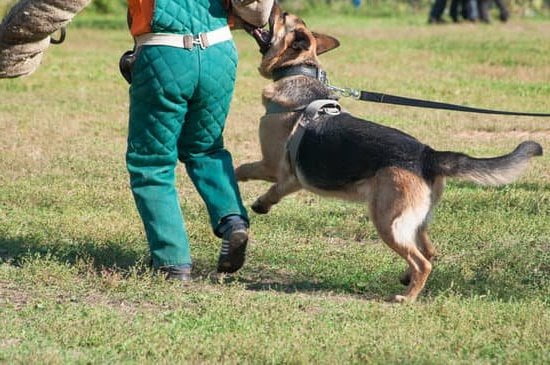Introduction
Training a Rottweiler has numerous benefits when it comes to behavior and obedience. These intelligent, loyal dogs require dedication and consistency in order to produce successful results. By having your Rottweiler trained, you will have a stronger bond with your animal that is based on trust as well as respect. On top of this, training can also help prevent behavioral problems from arising or even getting worse. You will be able to teach your dog how to act nicely both inside and outside of your home, making the most out of its friendly nature. Training is also important for the safety and well-being of both you and your Rottweiler; it teaches them when they should respond positively and politely to strangers while still offering protection if needed. Additionally, a Rottweiler trained in various commands such as walking on a leash will make interactions with other people much more pleasant for all involved parties!
Establishing a Loving Bond With Your Rottweiler
To establish a loving bond with your Rottweiler, it’s important to be patient and consistent. Set up a schedule for daily walks, feedings and training sessions. Clearly outline rules and expectations and be sure to consistently stick to them. Make time for physical activity, such as playing fetch or tug-of-war, as well as mentally stimulating activities like teaching the dog new commands or tricks each day. Additionally, provide plenty of rewards for any positive behavior the pup demonstrates so that he or she knows that positive reinforcement encourages repeat performance. Regular grooming sessions give you extra quality time together while also keeping your pet clean and healthy. Visit the vet at least twice a year to keep on top of any health problems or parasite issues; this is also a great opportunity to get advice on how best to care for your four-legged friend. Finally, be sure not only to give your pup lots of love and attention but also set aside some alone time for them where they are free to explore their environment and play with their toys without interruption from humans or other animals in the house. With patience, consistency, reward-based training methods and lots of love you can create an amazing bond with your Rottweiler!
Establishing Realistic Goals and Expectations For Rottweiler Training
When training a Rottweiler dog, it is important to establish realistic goals and expectations for the experience. This will ensure that your efforts yield tangible results, rather than frustration and disappointment. Some tips for setting up realistic goals and expectations include:
• Understand Your Dog’s Intelligence Level: Rottweilers are intelligent dogs but they are still only capable of learning a finite number of commands per training session. Starting out with too many skills may lead to discouraged and overwhelmed behaviour from your pup.
• Set Realistic Expectations: While you should strive to teach your pup several basic skills such as ‘sit’ or ‘down’, don’t expect perfection in every task right away. It may take some time before these basic commands are anything more than formalities repeated mindlessly by your pup.
• Remain Calm: Training takes dedication, patience, and consistency; if you become frustrated or impatient, the process of teaching new behaviours slows down or even stops altogether! Remain positive throughout the entirety of each session and provide plenty of praise when successes occur – this should be enough motivation for your pup.
• Utilize Variety: Repeating the same old drill during each lesson can get a bit dull; mix up the routine now and then to keep things interesting! Introducing new commands regularly helps keep both minds sharp while expanding upon existing skills at the same time.
Socializing and Training Your Rottweiler Puppy
Socializing your new Rottweiler puppy is an important part of the training process. It’s essential that your dog become comfortable and confident around other animals and people. It’s important to start socializing your pup as early as possible, usually when they are between 8-10 weeks old. Start by introducing your pup to different people in a controlled setting. It’s best to allow them to meet one person at a time so they don’t become overwhelmed. When introducing your pup to other animals, make sure that the bigger animal is on a leash to ensure their safety and comfort.
It is also important to provide positive reinforcement during the socialization process. Whenever your Rottweiler pup interacts with another animal or person in a calm manner, offer them a treat or praise as a reward for their behavior. You can also practice basic obedience commands such as “sit” and “stay”, beginning with one or two simple commands and gradually adding more if they seem interested in learning new skills. Additionally, it’s important that you keep the sessions short and upbeat so that your pup will associate learning with positive experiences instead of becoming overwhelmed or anxious. Finally, never punish your puppy for being afraid or hesitant; instead redirect their focus towards something positive like playing with another pet or interacting with a person who makes them feel safe and secure.
Teaching the Basics
Training your Rottweiler dog is one of the most rewarding experiences that you can have as an owner. A well-trained Rottweiler will be a happy and compliant pet, and will be less likely to misbehave or act out in unacceptable ways. When training your Rottweiler, there are certain basic commands that you should focus on first: ‘Sit’, ‘Stay’, ‘Heel’, ‘Down’, and ‘Come’.
Start by teaching your Rottweiler the ‘Sit’ command. Hold a treat in front of their nose and slowly move it over their head until they naturally sit down. As soon as they do, reward them with praise and the treat. Practice this several times until they understand the concept and know to sit when prompted with the command.
For the ‘Down’ command, use a similar technique to teach them how to lay down on cue. Hold a treat close to their muzzle but slightly lower than before, almost touching their chest area. They should instinctively start to lay down so reward them with praise and the treat immediately once they do so successfully.
The ‘Stay’ command is crucial for safety reasons – if your Rottweiler is instructed to remain still in an area no matter what distractions arise around them, it might save him/her from danger at some point during their lives. Work on this command by having your Rottweiler sit or stay in place, then step away from them for a few seconds before coming back for reward. Gradually increase the time apart as your pup gets better at following this instruction until it becomes second nature for him/her to stay when commanded.
Finally, make sure that everybody who interacts with your pup are using the same commands consistently so that he/she doesn’t get confused –a firm tone accompanied by simple cues such as hand signals should be enough! With patience, consistency and plenty of treats, soon enough you’ll have a happy and obedient Rottweiler!
Modeling Proper Behavior and Establishing Basic Rules in the Home
Training your Rottweiler dog should be approached in a consistent, positive, and patient manner to ensure long-term success. Often dogs learn best by observing and copying their owner’s behavior. Therefore, it is essential that you demonstrate the behaviors you want your Rottweiler to exhibit. This includes things like sitting politely before meals, playing calmly with toys, and greeting visitors without jumping on them. In addition to modeling proper behavior, it is important to establish basic rules in the home that your dog must follow. For instance, decide if your dog is allowed on furniture or if certain rooms are off limits to them. Set up these boundaries during the training session so that it can become part of routine for your pet and reinforce expectations of good behavior. Other potentially useful methods of training include crate training as well as clicker or reward-based training, which utilize positive reinforcement and treats to motivate appropriate behaviors from dogs. Obedience classes may also be an effective way for owners and their Rottweilers to bond while teaching them the basics of house manners.
Moving Towards More Advanced Training and Challenges
Once your Rottweiler has mastered the basics of obedience training, you can move on to more complex commands and activities. Further training and socialization are very important for allowing the Rottweiler to reach their full potential. To begin, you can teach your Rottweiler more advanced commands such as playing dead, retrieving objects and performing tricks like rolling over or crawling across the floor. You may choose to reward them with treats or positive reinforcement. Additionally, it is important to put them through agility practice in order to increase their physical endurance and mental alertness; this involves running fast, jumping over small obstacles, walking along a balanced beam, crawling through tunnels and following hand signals given at a distance. Social interaction and introductions must also be conducted responsibly in order to approach unfamiliar environments calmly. Finally, it is beneficial for a Rottweiler’s development to be exposed to novel smells and sounds that act as informal triggers for further learning experiences.
Time-Saving Tips and Strategies For Training Your Rottweiler
Establish a Routine – Rottweilers thrive on routine and structure, so set up a schedule for your pup that includes regular potty breaks, meal times, and training sessions. During these training sessions, reinforce basic obedience commands such as sit, stay, come, down, off and heel. Praise good behavior to ensure your pup understands what is expected of him.
Create Consistent Rules – Create consistency with your rules which will help your dog understand which behaviors are acceptable and which aren’t. Explain every command you give him in the same words each time and use the same gestures to indicate each command too . If your emotional state shifts from one day to the next , be sure your pooch knows he needs to abide by the same rules regardless of how you feel.
Take Training Outside – Don’t just stick to basic training indoors — take it outside! Natural settings provide more variety and distractions that will challenge his obedience skills. This will also give him some much needed mental stimulation that can help with problem behaviors like chewing or barking. Use his prey drive against him by hiding treats or toys around the yard so he has to go looking for them as part of his training session.
Socialize Your Pup – Socialization helps puppies learn how to become well-rounded members of their pack or family unit. Take your pup on outings such as going to the park or beach where he can interact with people and other dogs in a controlled environment . This can help reduce aggressive behaviors later on as an adult dog who won’t have fear when encountering different situations and new people.
Encourage Positive Reinforcement – Reward-based training is the most effective way of teaching a Rottweiler by offering food rewards after displaying desired behaviors . When combined with verbal praise , this form of positive reinforcement encourages repeat performances in order for them to receive more rewards ! Playtime also works great for reinforcing good behavior since it shows that obeying commands can lead to fun activities
Conclusion
Training your Rottweiler can be a rewarding experience. Having an obedient and well-behaved dog that knows how to respond to commands and commands respect can bring you great joy. Not only will it improve your relationship with your pet but through training, you’ll also develop your own ability as a leader. Working towards mutual understanding can open up whole new ways of communication between you and your pet, making daily life easier for both of you. It is important to remember that creating a happy atmosphere between the two of you is key to successful training, so try to make the experience for positive for both of you. And remember, be patient; it may take some time until both of you have mastered all the commands and have achieved full obedience from them. With enough dedication and patience, however, these rewards will undoubtedly be rewarding!

Welcome to the blog! I am a professional dog trainer and have been working with dogs for many years. In this blog, I will be discussing various topics related to dog training, including tips, tricks, and advice. I hope you find this information helpful and informative. Thanks for reading!





